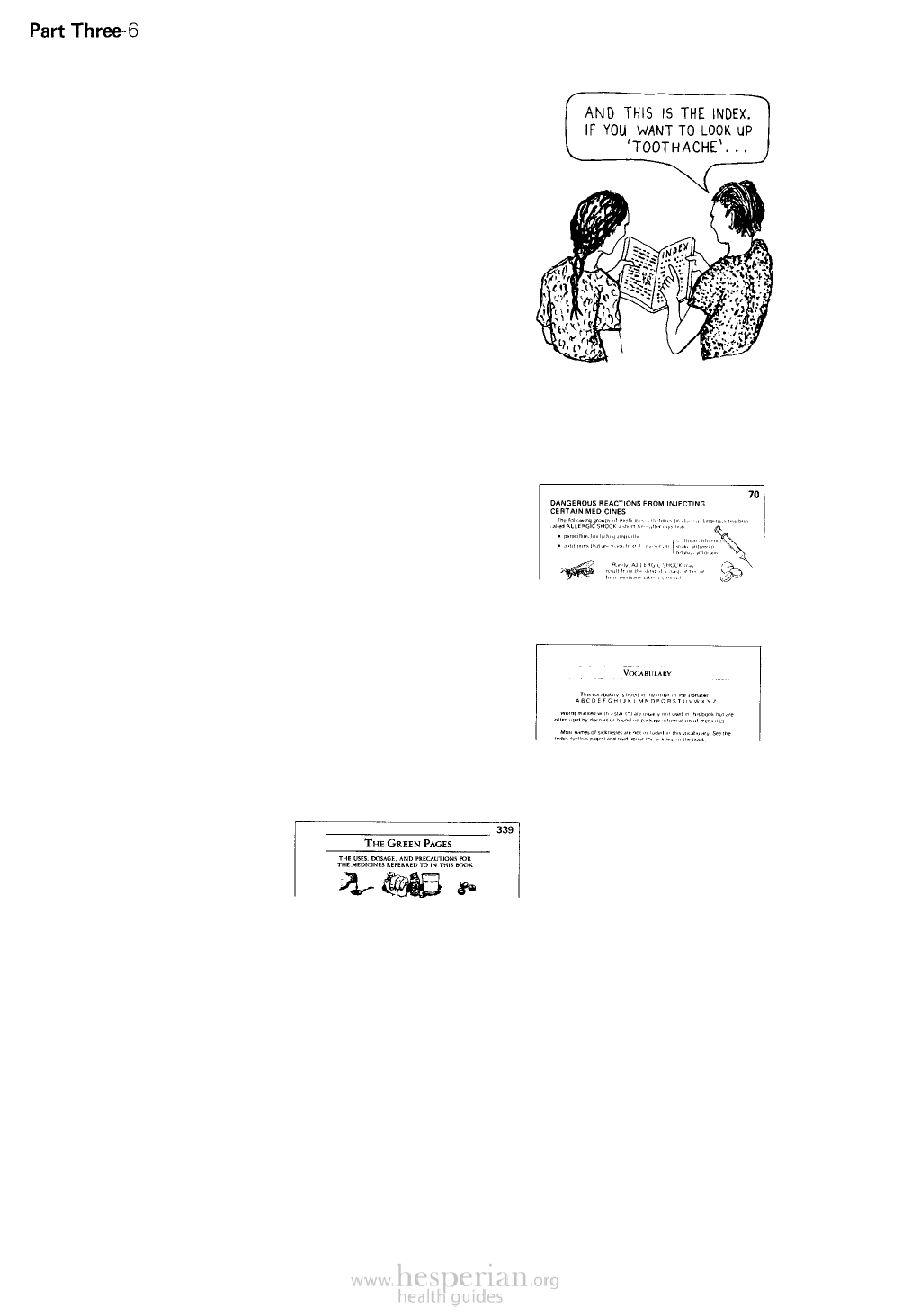
P2r0a-vrti Three-vi
3. Now turn to the INDEX (yellow pages). Show
how the subjects are listed in alphabetical order.
Practice: Ask the person to name a health problem
that concerns her. Suppose she says “toothache.”
First have her flip through the book looking for
pictures of teeth. (This is the way most people
look for things first.) Next, show her how to find
“Toothache” in the CONTENTS, then in the INDEX.
Now have her pick another subject, such as
snakebite. Let her try to find it herself, first by
flipping through the book, then by using the
CONTENTS and the INDEX. Have her turn to the
right page and read what it says.
4. Page references. Point out that throughout the
book there are notes in parentheses ( ) saying
“(see p._____)” or simply “(p.____).” These
give the numbers of pages that have related
information. On the second page about snakebite,
for example, there is a page reference for
precautions to prevent allergic shock (p. 70).
Practice: Have the person look
up some page references and
read the relevant parts.
5. S how the person the VOCABULARY (WTND,
p. 419). Explain that this is an alphabetical list of
words and their meanings. Then flip through the
book until you spot some words in italics— for
example, bacteria on page 55, and respiratory on
page 57.
Practice: Have the person look
up these words in the vocabulary.
6. Show the person how to look up specific
medicines in the GREEN PAGES, using the
List of Medicines on page 341 and the Index of
Medicines on page 344.
Practice: Have her look up a
common medicine, such as
aspirin, and read about it. Point
out the importance of correct
use, correct dosage, and always
reading and following the
precautions.
7. Finding out about a health problem when you are not sure just what it is.
Have the person look in the book under the general kind of problem (skin problem,
eye problem, old person’s problem, etc.). Or look under the most important
symptom or sign—for example, ‘cough’ or ‘fever’.
Point out that in many parts of the book there are guides to help you decide which
illness a person probably has. For example:
• Guide to Identification of Skin Problems, p. 196
• Different Illnesses that Cause Fever, p. 26
• Different Kinds of Cough, p. 168
For a more complete list of these guides and a discussion of how to use them, see
Chapter 21 of this book.